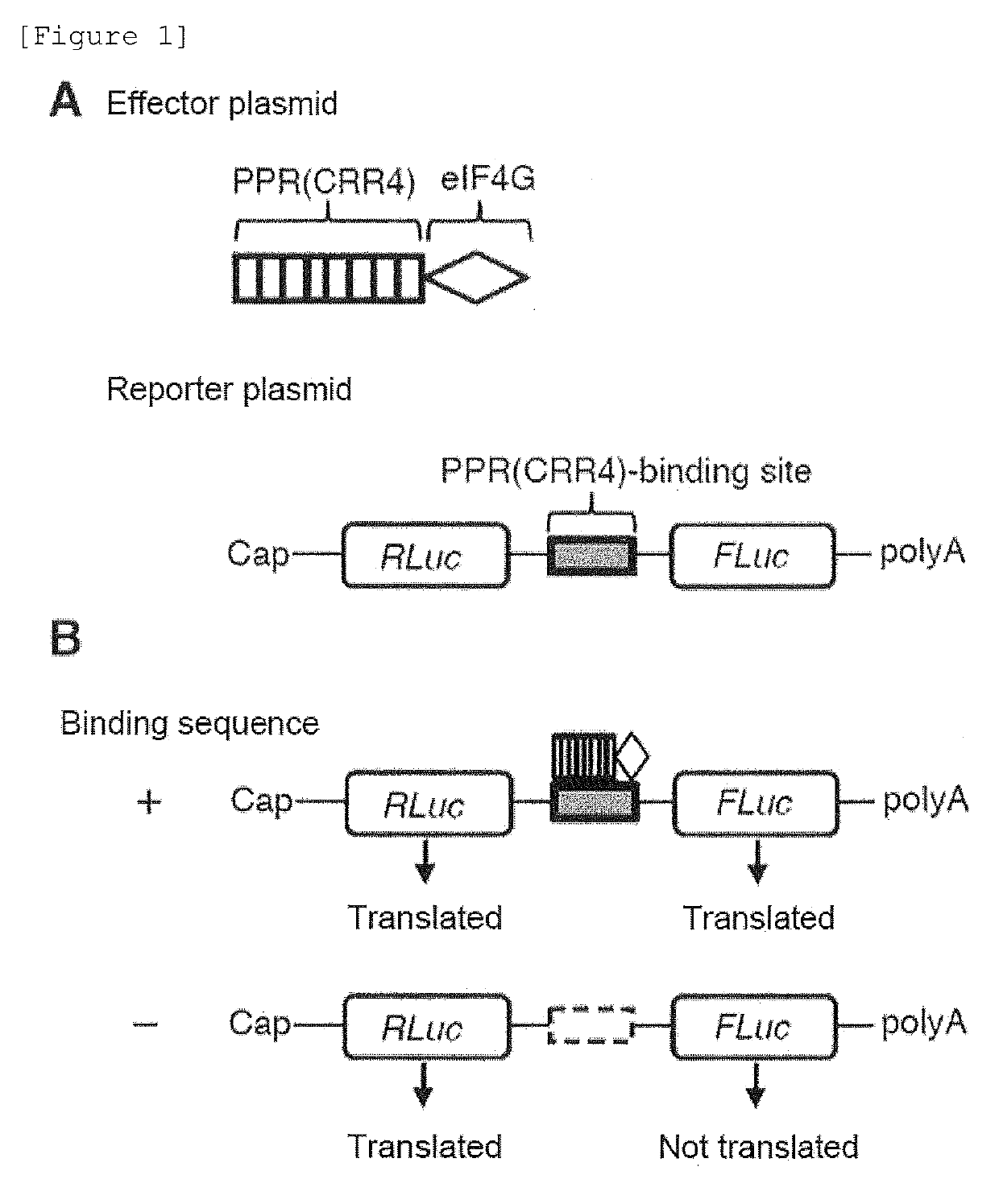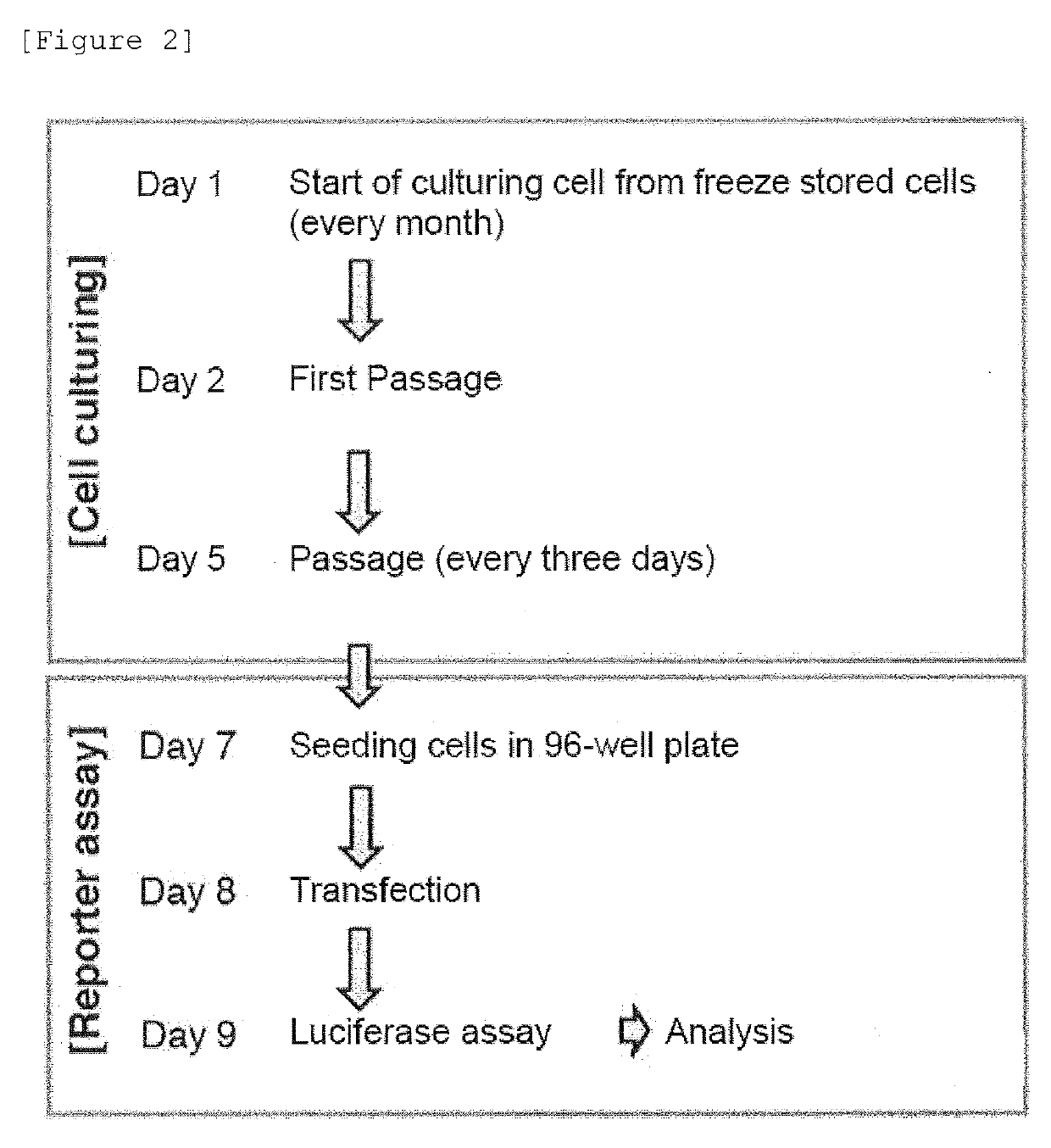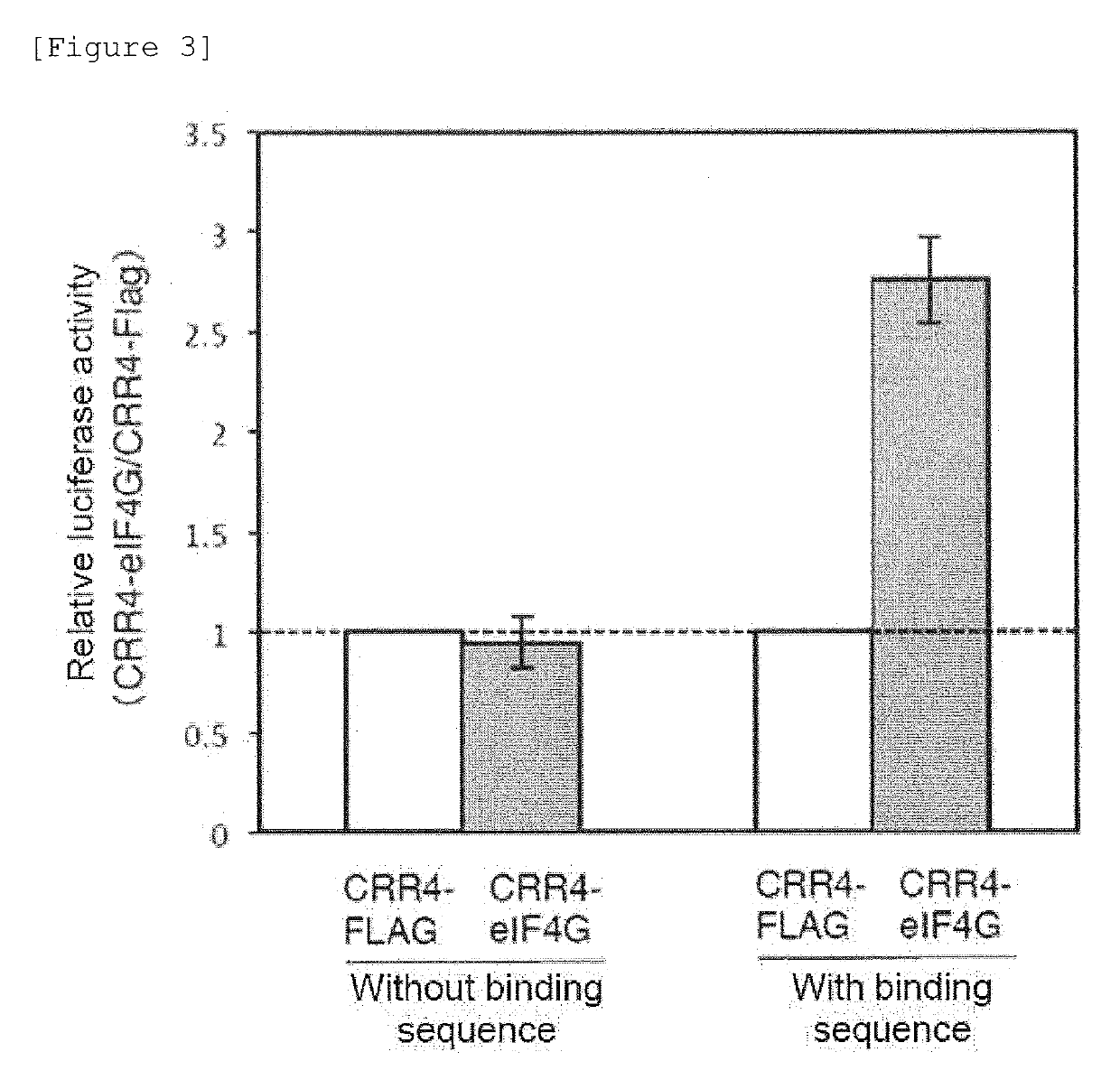FUSION PROTEIN FOR IMPROVING PROTEIN EXPRESSION FROM TARGET mRNA
a technology of fusion protein and target mrna, which is applied in the field of fusion proteins to improve the expression of target mrna, and can solve the problem of limited development of techniques using protein factors which specifically target rna
- Summary
- Abstract
- Description
- Claims
- Application Information
AI Technical Summary
Benefits of technology
Problems solved by technology
Method used
Image
Examples
example 1
nt in Protein Expression Level from Target mRNA by Fusion Protein of PPR Motif and eIF4G
Materials
(Equipment)
[0082]Basic facility for molecular biological experiment (for construction of plasmids, for example)[0083]Inverted microscope (DM IL S40, Leica Microsystems, Wetzlar, Germany)[0084]CO2 incubator (KM-CC17RH2, Panasonic Healthcare, Tokyo, Japan)[0085]Clean bench (MHE-S1300A2, Panasonic Healthcare, Tokyo, Japan)[0086]Aspirator (SP-30, Air Liquide Medical Systems, Bovezzo BS, Italy)[0087]Centrifuge (swing rotor) (LC-200, Tomy Seiko, Tokyo, Japan)[0088]Ultra-low temperature freezer (−80° C.) (MDF-C8V, Panasonic Healthcare, Tokyo, Japan)[0089]plate reader (EnSight Kaleido, PerkinElmer, Waltham, Mass., USA)
(Cell Culturing)
[0090]HEK293T cell line (see note 1)[0091]Dulbecco's modified Eagle's culture medium (DMEM, glucose-rich) (see note 2)[0092]100× penicillin-streptomycin solution[0093]Fetal bovine serum (FBS) (see note 3)[0094]EDTA-NaCl solution: 10 mM EDTA and 0.85% (w / v) NaCl, pH ...
example 2
nt in Protein Expression Level from Target mRNA by Fusion Protein of PPR and Another Functional Domain
[0153]In the case where useful substances are produced using cells, the amounts of protein synthesized by endogenous genes and exogenous genes should be precisely controlled. The final amount of the synthesized protein is determined by the insertion positions of genes, the mRNA transcription amount, post-transcriptional regulation (regulation at an RNA level), post-translational modification, and the like. For these reasons, the present inventors have devised a method of enhancing the translation of mRNAs taking advantage of the fact that a PPR protein sequence-specifically binds to a target RNA molecule (FIG. 4). In the translation of mRNAs in eukaryotes, an mRNA undergoes action of a translation initiation factor (eukaryotic initiation factor; eIF). As a result, the ribosome is recruited near the translation starting point, and then the translation of the mRNA is started. In other...
PUM
| Property | Measurement | Unit |
|---|---|---|
| length | aaaaa | aaaaa |
| nucleic acid | aaaaa | aaaaa |
Abstract
Description
Claims
Application Information
 Login to View More
Login to View More - R&D
- Intellectual Property
- Life Sciences
- Materials
- Tech Scout
- Unparalleled Data Quality
- Higher Quality Content
- 60% Fewer Hallucinations
Browse by: Latest US Patents, China's latest patents, Technical Efficacy Thesaurus, Application Domain, Technology Topic, Popular Technical Reports.
© 2025 PatSnap. All rights reserved.Legal|Privacy policy|Modern Slavery Act Transparency Statement|Sitemap|About US| Contact US: help@patsnap.com



